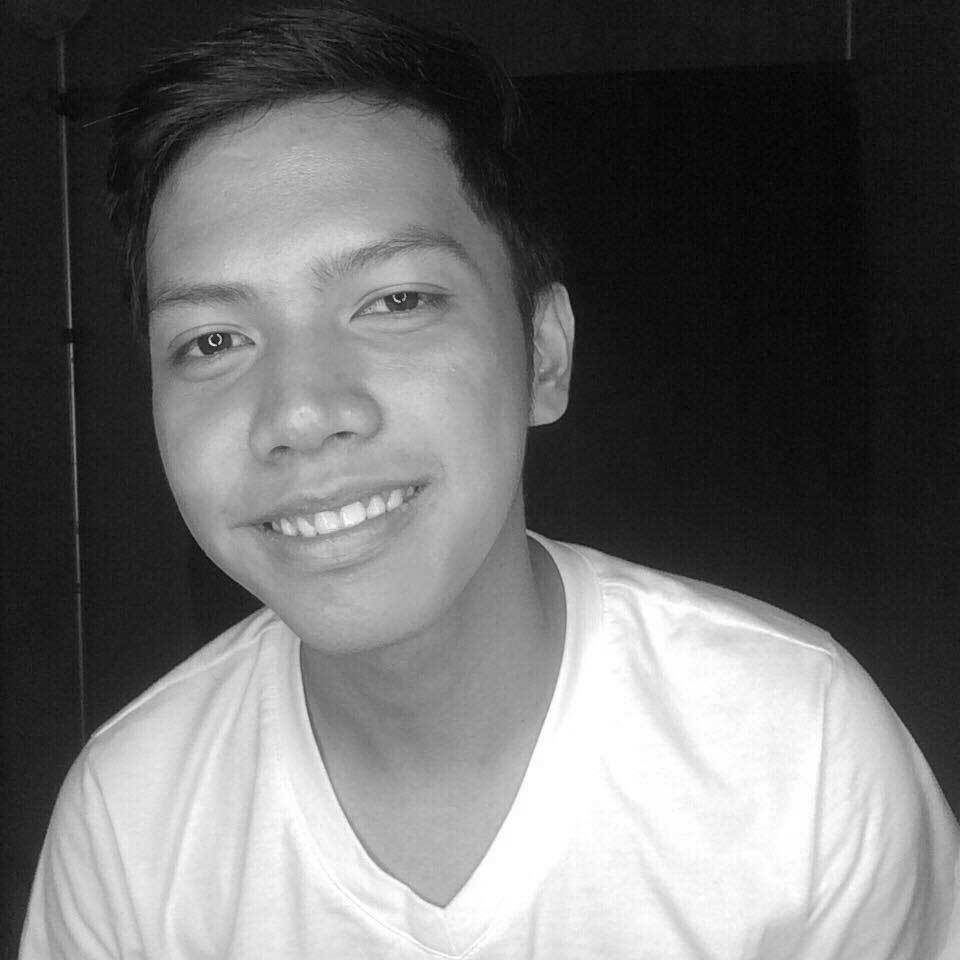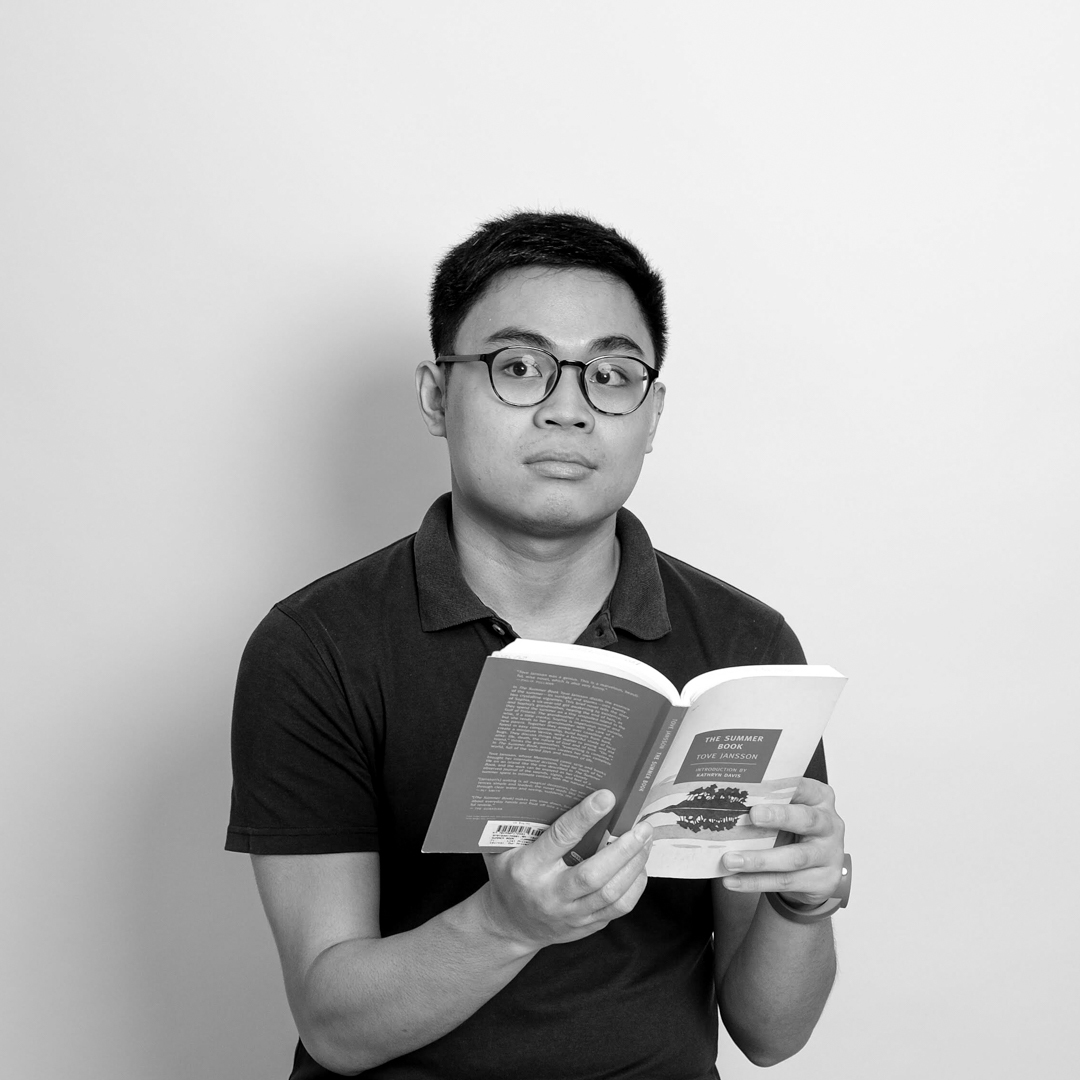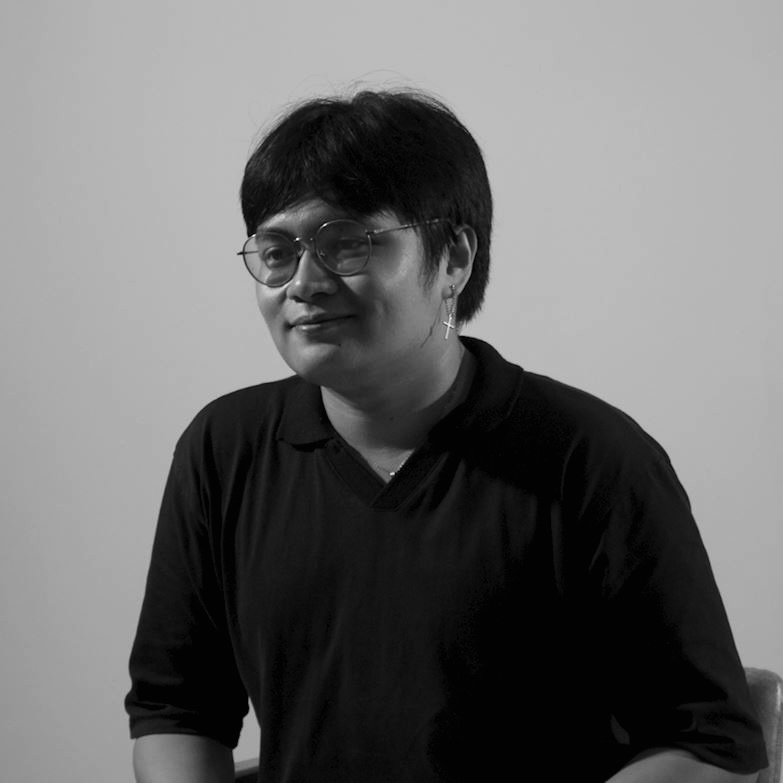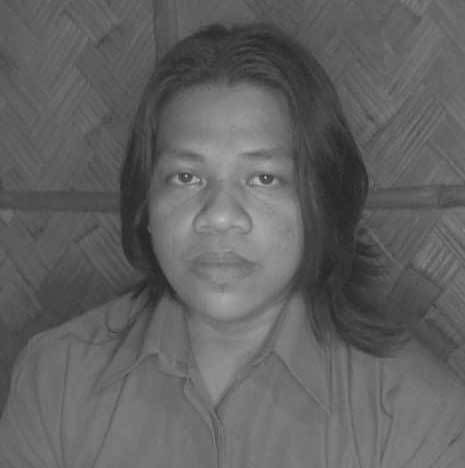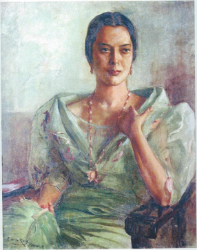There is a moment in looking at Mark Justiniani’s works wherein the spectator’s gaze transforms into self-scrutiny. It is the moment when the spectator’s sight, now having adjusted well enough to the nuance of light and dark, reveals itself to itself: the spectator’s reflection suddenly appearing from the bottomless pit, the spectator’s gaze shifting its attention from the shapeless void into the contours of the face that catches light. As Nietszche said: If you gaze long into the abyss, the abyss will stare right back at you: the sudden familiarization of the spectator that it is his eyes that he is seeing, that the object of his gaze is his own reflection. It is this facet of Justiniani’s works that interestests me: what will you do if the darkness that you are looking into is the darkness within you?
This sudden transformation from disinterested gaze to self-scrutiny is a very interesting aspect of Justiniani’s work. It is as if the coin you dropped in the proverbial well has come back first as a soft chink then amplified by the well’s hollow—confirming that the well is not bottomless, it does not lead to something elsewhere and foreign, instead, it goes back to you. In Justiniani’s work, seeing our reflection gives us the idea that the darkness is not at all an encompassing void, that we understand this darkness always in relation to ourselves. In the darknesses that structure Justiniani’s work, the seemingly infinite depths that his mirrorworks recreate fold back to the spectator: at a certain moment, the spectator is not looking at the seemingly infinite distance anymore, instead he is looking at himself.
In the concentration of lights that reveal the construction leading to an unfathomable depth, the stare becomes entranced by the uncertainty that the darkness represents. The illuminated part of the railway path, for example, is not really where your eyes fixate, instead you fixate on the darkness that lies central in each of the mirrorwork installation. This fixation in the darkness may mean expectation of and anticipation for different things: it could mean the sudden and lethal illumination of a train’s headlights heading straight at you, it could mean finding your own face, at the far and more shadowy end of Echopraxia’s train interiors. This darkness thickens, and then like tar, becomes a trap: we are enticed by the lights to come closer, only to find out that what creates each set up’s form and structure is a central darkness: of uncertainty, of unknowing. The darkness reels us in, and in a vertiginous instant, captures
This trap, for me is a productive one. Here, the element of uncertainty transforms into the element of discovery and imagination. This is what drew me into the universes of Justiniani’s works. Unlike shows that flourish in the white cube’s illumination, Justiniani’s works thrive in the corners and depths that are defined by darkness. Unlike the well-lighted objects that call our attention to their every detail—a painting’s strokes, or a sculpture’s grace, what Justiniani’s works call our attention to is precisely the way we imagine what lies ahead of the darkness, what we think we might be able to discover, what might become of us if we venture a little farther.
Justiniani’s works construct another dimension inside the museum—as a challenge to the definite space of the white cube, we have pockets of voids that extend the gallery to unknown spaces. We are no longer inside the claustrophobic white cube, where your every action is seen and evaluated by other gallery-goers. We are free in how we imagine what lies ahead. In this, it destroys the white cube: its clarity and its illumination, replacing these with unknowability, unfathomability, which after a while becomes discovery.
Experiencing Justiniani’s works is not the same as experiencing usual art objects. In Justiniani, experience guides my appreciation. The illuminated area brings me into familiar spaces—train interiors, station platforms, even eskinitas, only to be unsettled by the sheer suggestion of what the unfathomable distance may bring. I remember a friend that I was with even joking that if we were to stare long enough at the bottom of Stylite, a humongous spider which serves as the librarian and archivist of the pile of documents will appear, and like in an episode of Alice in Wonderland, it will tell us, come in I have plenty of reading materials for you.
Of course, this is just one of the many experiences that may come out of Justiniani’s installations. Reverb, afterall, captures how a stimuli may be amplified by its resonance. In this, Justiniani’s mysteries of the dark may well be a kind of amplification of how we see ourselves, how we imagine things: the darknesses may be a source of fear: an unforgiving train, your face as part of a population of mindless drones, but also a source of mystery and magic, like a spider librarian.
Face-to-face with the abyss, what do we see? These depths entrap us and force us to face ourselves. The attention we give, is therefore, to ourselves. Our experience of the exhibit is our own. We are made to face our own fears and the possibilities of imagination that it generates.


